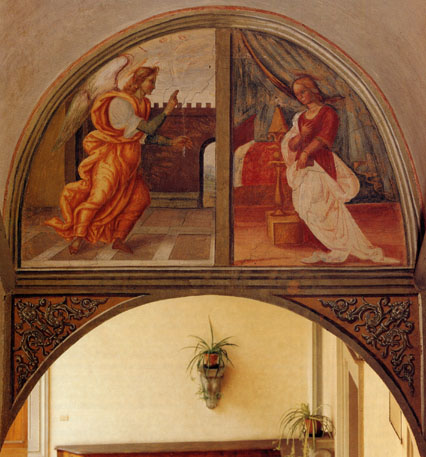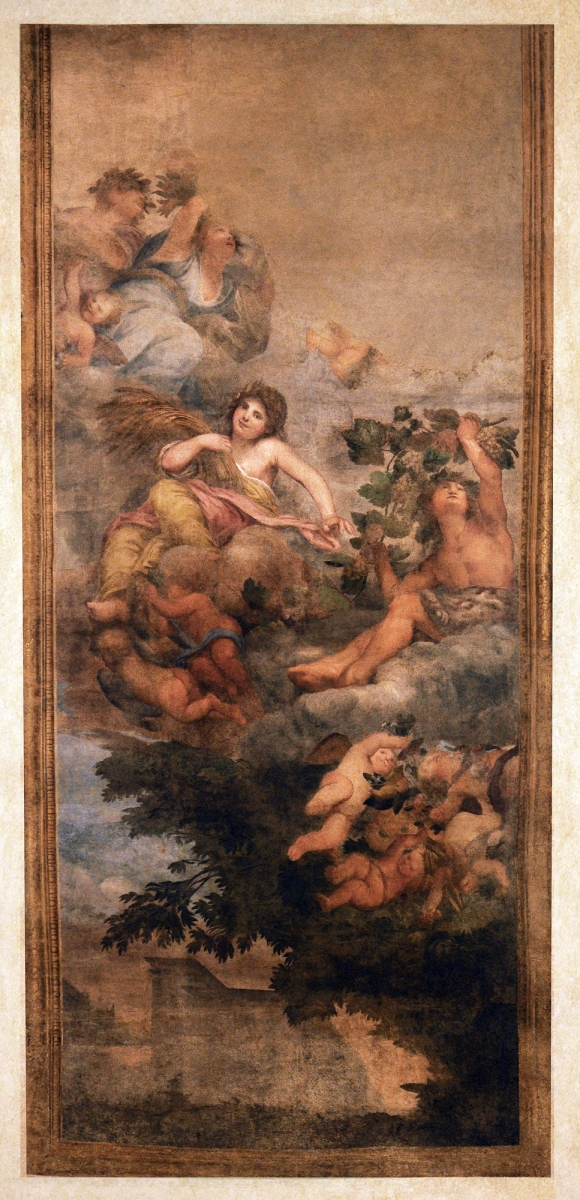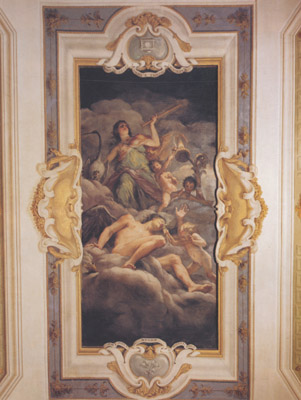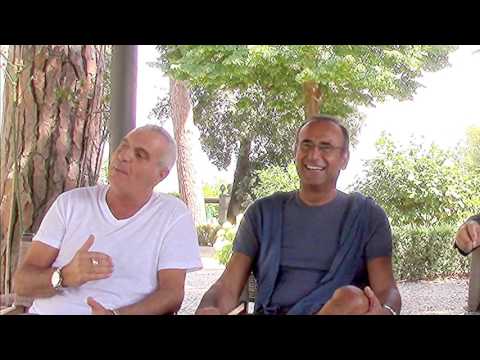The Villa's frescos

Raffaellino del Garbo (ascribed to), Annunciazione
Le Stagioni [The Seasons]. Another work of art only recently introduced in the rooms of the Villa is the fresco removed from the nearby Villa Grazzini, called Il Pozzino - "the small well" - due to the presence of a well inside its courtyard. The fresco was probably commissioned by one of the sons of the rich family, Giovan Francesco or Lionardo. The Florentine painter who executed the
 ceiling of the Pozzino most certainly learned his skills from Giovanni da San Giovanni and Il Volterrano and probably belongs to the second half of the 17th century. He seems to have participated in the Florentine experiences of the painters working at the time of the last Medicis, around 1680, with openings towards Gherardini, to whom the many figures of angels are likely connected; the painter frescoed a subject inspired by the delights of the countryside, with a view of the Villa as a place for pleasure and peaceful rest in every season, pictured in detail in the lower part. The "Seasons" are directly inspired by the works of Cesare Ripa, who took inspiration from the classics and in this specific case from the Odes of Horace and the Festivals and Metamorphoses of Ovid. Spring is figured as a young woman with hands full of flowers, under her is Summer, painted as a robust young woman with a garland of ears of wheat on her head, wearing yellow clothes. Then comes Autumn, figured exactly according to the Ovidian description, or like Bacchus. Winter probably concluded the cycle of the seasons, but his image has been lost during the unfortunate detachment of the fresco, during the 1950s.
ceiling of the Pozzino most certainly learned his skills from Giovanni da San Giovanni and Il Volterrano and probably belongs to the second half of the 17th century. He seems to have participated in the Florentine experiences of the painters working at the time of the last Medicis, around 1680, with openings towards Gherardini, to whom the many figures of angels are likely connected; the painter frescoed a subject inspired by the delights of the countryside, with a view of the Villa as a place for pleasure and peaceful rest in every season, pictured in detail in the lower part. The "Seasons" are directly inspired by the works of Cesare Ripa, who took inspiration from the classics and in this specific case from the Odes of Horace and the Festivals and Metamorphoses of Ovid. Spring is figured as a young woman with hands full of flowers, under her is Summer, painted as a robust young woman with a garland of ears of wheat on her head, wearing yellow clothes. Then comes Autumn, figured exactly according to the Ovidian description, or like Bacchus. Winter probably concluded the cycle of the seasons, but his image has been lost during the unfortunate detachment of the fresco, during the 1950s.

La Vigilanza e il sonno [Vigilance and Sleep]. Baldassarre Franceschini, called il Volterrano, was one of the best painters of the 17th Century in Florence. The fresco is in a hall passageway, that is to say in the antechamber of the main floor of the building. The original allocation of the room, called "the guard room", for use by the footmen, gives a motivation for the choice of subject: the antinomy between the mindful watch of Vigilance, placed side by side with the customary symbol of a crane with a stone in its claw (ready to wake the others, in case of danger, letting the stone fall), and the forgetful recklessness of Sleep, fed by the oppiates of poppies, its attribute since ancient times. Baldinucci, further moralizing this contrast, held that Sleep was awakened "on her order [Vigilance] by a group of children who filled his nostrils with smoke from burning poppies lit by an oil lamp".
Notices by Crusca
-
Speaker's corner
La competenza linguistica dei giovani italiani: cosa c'è al di là dei numeri?, by Rosario Coluccia.
Activities
-
The Piazza aims at the preservation and at carrying out activities for the promotion of multilingualism in the European Union; 2007-ongoing.
-
Digital integrated archive of didactic materials, iconographic and multimedia texts and documentation for the divulgation of Italian linguistic and historical-cultural heritage, with special regard to the second and third generation Italians abroad; project FIRB; 2009-2013.
-
Creation of Il Vocabolario del fiorentino contemporaneo (Dictionary of Contemporary Florentine Language): project financed by Regione Toscana and Comune di Firenze (first three-year period) and by Federico del Vecchio Bank - Banca Etruria group (second three-year period); 1994-1996/2011-2013.








